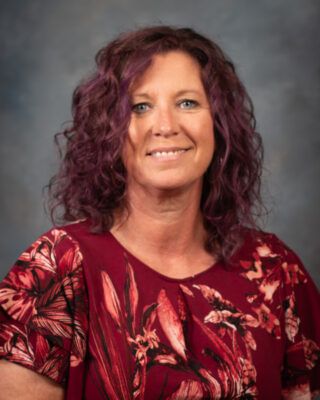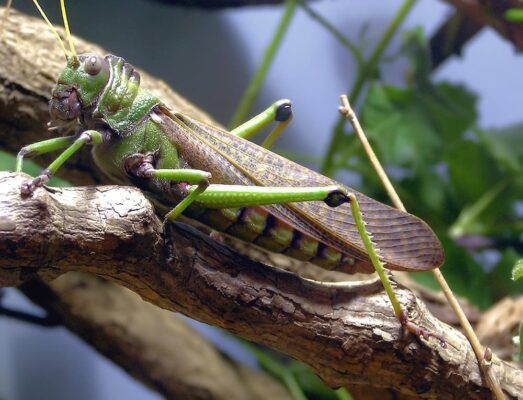During her time at the Moore College of Art and Design, Karen Noel — the administrative assistant for the Newman University School of Social Work — drew the first illustration of a new grasshopper species in Ecuador.
Noel’s contribution to the documentation of this new species began during a student internship in 1988.
“When I was in college, my major was illustration, but I leaned toward scientific and medical,” Noel said. “So when I did my internship, I did it at the Academy of Natural Sciences in Philadelphia in their entomology department.
“Basically, I was doing illustrations for the various entomologists in that department. One of them had traveled to Ecuador, and while he was there, he actually discovered this new species of grasshopper. So when he brought that back, it needed to be documented in order to get it out to fellow scientists.”
Drawing the discovery
Originally discovered by entomologist George Glenn in 1987, Caenolampis ottei had characteristics distinctive enough to merit a new species within its genus. Glenn decided to use the last name of mentor and colleague Daniel Otte, Ph.D., professor emeritus at Drexel University, to coin C. ottei.

In addition to the detailed notes and biological observations that are included in scientific journals, discoveries are oftentimes accompanied by some sort of visual or illustration.
“I happened to be there doing my internship, so I’m the lucky one who got to do the illustrations,” Noel said. “Those illustrations were the first time that scientists were ever seeing that specific species of grasshopper.”
In the process of illustrating the species, Noel learned that her mission wasn’t simply to draw a grasshopper, she said. Beyond the skills and technical aspects already required of drawing, Noel now had to consider many biological elements to ensure that the new species was properly represented.
“There are certain factors and elements of an insect that make it fall into a particular genus and species,” she explained. “It took many trial and error designs, but eventually, my illustration ended up getting published in the journal, ‘Proceedings of the Academy of the Natural Sciences of Philadelphia.’”
Art across the board
Following her internship, Noel went on to use her illustration skills in the legal field as well.
“I used to work for attorneys for a while doing medical malpractice illustrations. I would meet with doctors and surgeons, and we would talk about specific cases that they wanted to display in court for the jury to look at.”
Whether applied to science, law, mathematics or any other logic-intensive field, there are many ways in which art can open one’s eyes to the world around him or her.
“There are a lot of procedures that need to be illustrated step by step, things that you can’t always get with the camera,” Noel added. “A physician or a surgeon may develop a procedure, but the only way to get that to other surgeons is through these drawings that end up in journals and textbooks.”

In the eye of the beholder
Though many aspects inadvertently separate the fields of science and art, the overlap of the two empowers and informs them both.
“It’s interesting how something so artistic can blend together with something so scientific to create something visually pleasing but also scientifically and medically accurate.”
Much like science, art is a way to see the world, and for any artist, it can take many years to develop an eye for the craft.
“A lot of times people dismiss the field of study, ‘Oh, you went to art school?’ but it was still four years, it was still all my humanities, and it was hard: six-hour classes, drawing, life drawing. So it’s not always as simple as, you know, I can just wave a wand and it happens.”
Once one develops an eye for the craft, he or she may begin to realize that it applies to much more than just graphite and canvas.
“I always try to explain to my kids that there’s more out there than just what you see. You know, try to think of things in different ways — in artistic ways — and it’s amazing how differently you can see the world.”
As it relates to her current position at Newman, Noel said that even if social work doesn’t inherently provide a space for art, art itself can be used as a means of helping yourself or others.
“Being an admin in the social work department has helped me to realize how important art is as a therapeutic ‘tool.’ It can be therapeutic to create art, view art or inspire art.”
“I have always known how therapeutic art is for me personally but whenever possible I try to encourage my friends who are not artistic to at least give it a try. It doesn’t matter if the art a person creates is perfect or beautiful. If it helps them find some calm and provides self-care then it’s a success.”
Fine Arts Program
Gain exposure to historical perspectives, the principles of design, and a diversity of media through our curriculum.

